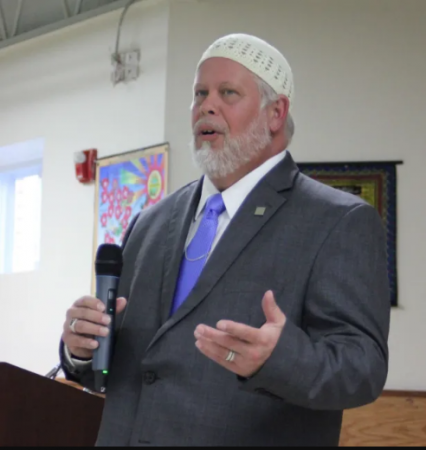
United States: Former US Marine Richard McKinney, who was taught to despise Islam during the wars in Iraq and Afghanistan, is enraged at the Muslim neighborhood when he returns to Muncie, Indiana.
According to local media, he was upset that his daughter would be made to sit next to their children in their primary school.
In 2009, McKinney visited the Muncie Islamic Center, which he considered his last act, unable to control his anger towards Muslims.
Also Read: Pope's visit to Bahrain to strengthen ties with Islam
He had already visited the mosque to choose a location to hide his bomb and to gather information supporting his belief in Islam as a "killer ideology" with the intention of killing or injuring hundreds of Muslims. He had made an exploratory journey.
"I told people that Islam is cancer," he remarked at the time. I had surgery to fix it.
However, when McKinney entered the mosque, he ran into a type of protest he hadn't imagined, and something happened that day that would have reversed his plans.
McKinney recently spoke to CNN about how that unexpectedly changed after he left his house to go to the mosque, which he initially thought would kill him.
He entered the mosque armed, but faced resistance he had never imagined.
Instead of the murderous scenario he had imagined, several worshipers came to him and took the weapon he intended to use to kill them. Then Muhammad Bahrami, one of the founders of the Islamic Center from Afghanistan, approached, gave him a bear hug, and wept.
"I still don't understand it, even now!" According to McKinney, that is then.
Also Read: Palestinian rage increases in the face of Israeli election boycott
Alternation between two extremes
In the Islamic center of his city and later in the Muslim community, McKinney met several people who helped him control his anger, until he felt bad about what he was planning to do. Put.
One of them was Jomo Williams, an African-American who lived in a McKinney-like hostility after his great-grandfather was murdered and castrated by "white occupiers" and who had maintained this hostility even after converting. . Islam.
The wife of the Afghan Muhammad Bahrami, who first embraced McKinney, was a woman he called "Mother Teresa", from the Muslim community in Munsi.
Mother Teresa was also aware of the damage caused by the war. When the Soviet Union invaded Afghanistan in 1979, she fled the country with her family, spent six years in a Pakistani refugee camp, married and immigrated to the US.
McKinney continued to visit the Islamic Center to see Bahramis and other Muslims, read the Holy Quran, and befriend the Muslims who taught him about Islam and its principles.
Also Read: Chhath Puja: 10 you should not do during Chhath Puja, Chhath Puja Mahurat
McKinney's conversion to Islam came eight months after his initial visit to the mosque. After the ceremony, he was greeted by those whom he once intended to harm in a "big hug pit".
Later, McKinney became a supporter of Islam and held the position of President of the Islamic Center in Muncie for two years.
Stranger at the gate
The story by Richard McKinney is the focus of the short film Stranger at the Gate. The film, which won a Special Jury Prize at the 2022 Tribeca Film Festival, describes how McKinney changed his mind and became a Muslim and even took an unexpected role in the mosque after abandoning his original plan. played.
The center's Afghan co-founder, Muhammad Bahrami, is described in the film as acting in a startled manner when he hugged Richard before crying.
The film's director Joshua Seiftel says Richard McKinney's story gave him hope that he could heal some of the most dire divisions in the United States, making his film debut in his online "Secret Lives of Muslims" video series.